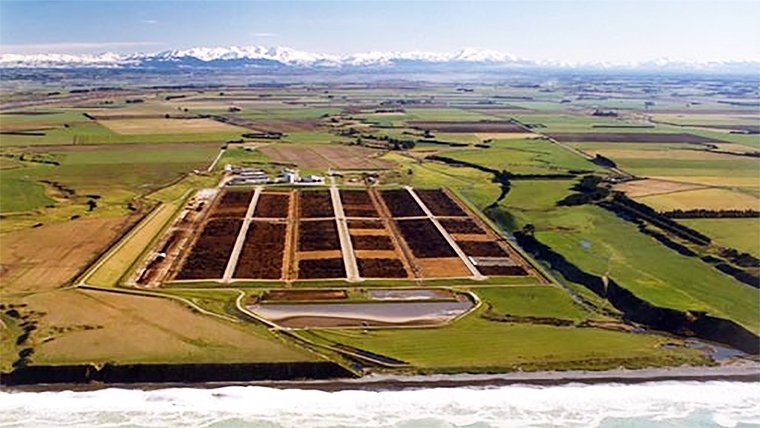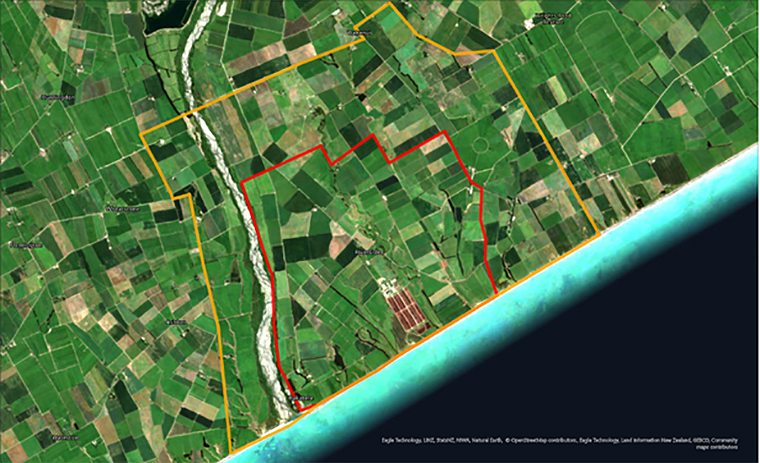
It was only a few of months ago that MPI and the farming sector were getting close to congratulating themselves on being the first country to rid itself of the scourge of M. bovis. The news this week of M. Bovis being found at the Five Star feedlot near Ashburton has put paid to that aspiration for the meantime.
The disease has persisted in popping up in the Mid-Canterbury region since June, with the feedlot being the sole ‘farm’ still knowingly active.
However, the news it has got further into the feedlot indicates that the beef industry is where the latest outbreak is centred although there is still indications that the dairy sector has the disease as a case was picked up through routine milk testing and as of September 9th and a further 61 farms were requiring more investigation.
At the moment the feedlot with approximately 11,000 cattle on board is to be cleared of livestock plus an additional 8 nearby farms and a further 6 that are undergoing testing. The culling is due to start next month, when completed this will lift the total number of cattle to be culled to approaching 200,000; currently it is at 176,000.
Apart from the feedlot and the 8 farms (to date) that require ‘cleaning out’ for whom the news will be devastating, the cleaning out of the feedlot is going to impact upon those farmers who supply stock and downstream on the supply of cattle to the local meat processing works. Initially the slaughter of those cattle to be culled will provide a ready source of livestock to the ANZCO meat works but there is likely to be quite a pause in the finishing programme until a spread of age and weights are again flowing through the feedlot. This is also likely to test the loyalty of the Five Star ANZCO customers as there will be several months when product is likely to be available and they will no doubt be looking elsewhere for supply.
What this setback does to the future of the eradication of the disease is uncertain, but it must undermine the confidence of those involved and the cattle industry itself.
Having seemingly come so close to believing the disease was all but gone to over a couple of weeks being at the stage when potentially another 20,000 cattle may need to be culled, might mean a rethink is required.
At the moment the fact that the disease seems to be contained within the Mid-Canterbury region (and we can only hope that is the case) is the only redeeming feature of this latest outbreak. There have been no known cases outside the region since mid-2020.
Looking at a paper which discusses the links of M. bovis from feedlot calves with pneumonia and polyarthritis in Buenos Aires province, Argentina is a poignant reminder of the potential severity of the disease and it should be too soon to give up on eradication yet.
Springtime, with the Bulk Tank Test programme operating in a new season was always going to be when there was a likelihood that if any M. bovis was lurking it would show up. However, the scale within the beef industry is a surprise, hopefully the dairy industry will be spared from the worst this time around.
The timing of the feedlot closure has come at a time when the impact upon those farms supplying it with unfinished cattle will create less complications than perhaps any other time of year as at least grass growth in most regions is good and it should allow farmers to readjust stocking rates before feed pinch periods arrive.
However, with Five Star out of the market for some time it is likely to reduce demand for cattle and lower returns for those selling stock.
There has been some criticism of the approach that MPI have been using currently with the ‘system’ letting farms with low thresholds of M. bovis within the herd allowed to continue operating without culling, potentially leaving a risk for further infections. Back in May the government confirmed that another $68 million was available to be spent over the current financial year in combating the disease. All cattle that are currently identified to be culled are meant to be gone by mid-January with a further period to ‘clean’ effected properties after that.
The map below shows the feedlot and ‘affected’ areas.

Red is the High Risk Zone, yellow is the At Risk Zone.
14 Comments
Are cattle on feedlots more at risk? Does the feedlot fattening food weaken the animals' immune systems?
There is a lot of recent research showing that feedlot beef has a weakening effect on the human immune system compared to pasture raised beef.
This is a disaster.
The ongoing presence of Mycoplasma bovis at the Five Star Feedlot has been known for approximately four years. This property has been recorded as MB positive throughout this period.
However, the public acknowledgement of ongoing Mycoplasma bovis at Five Star Beef has been lacking. Nevertheless within Mid Canterbury farming circles it was well known.
Officials and Five Star have known throughout this period that eventually Five Star would need to be emptied of animals.
There has been clear evidence during this period that it could spread between pens. There was also disputed evidence that it was spreading from Five Star to neighbouring properties. But this evidence was disputed because it did not accord with the theory about MB transmission routes.
KeithW
keith,
Must we continue down the path of total eradication? As I understand it, the disease does not effect us and no other country has succeeded in eradicating it. Should we keep throwing money at it?
Having come this far on the journey I don't think there is any chance of the Government giving up.
But whether we should ever have tried to eradicate it can be debated. The eradication campaign has led to much heartbreak, including being linked to multiple suicides and family breakups. Much of that is deeply hidden and of course people do have a right to their privacy.
Ironically, in countries where Mycoplasma bovis is present ( and that means almost all countries) most farmers know almost nothing about it as it tends to only show itself in situations where the animals are stressed. There are actually very few farms in NZ where the disease has manifested - on most affected farms was only the testing that indicated the organism was present and there were no clinical symptoms.
My own criticisms of the programme related to the way it was administered, particularly in the first 1.5 years, rather than the decision to try and eradicate the disease. More recently, I do think the Five Star feedlot situation should have been in the public arena a long time ago. Some more transparency would have been good.
KeithW
When MB first appeared there was an outbreak in Lincoln - at the Uni Farm I think but MPI did not notify farmers in the district and it became public when the press published an article on the outbreak so the current situation seems BAU for MPI - conceal the evidence which questions their policies and suitability as a trusted regulator.
But there was a cover-up for two years? By whom?
Maybe not a cover-up but definitely a failure of adequate public disclosure as to the ongoing nature of the infection at the feedlot.
KeithW
The fact it's been there for years and is only now being dealt with would indicate five star has been treated totally differently to all others. Strange.
To hard/costly basket?
Yes, Five Star has been treated differently. There is no doubt about that. I am sure that there were significant negotiations between Five Star's Japanese owners and the Government. With hindsight it would have been better if on-site eradication had occurred earlier. However, there was also a logic to the idea that it was best to first be confident that the supply of infected animals had ceased, thereby reducing the chance of reinfections and having to repeat the costly process. I think it regrettable that the reasoning for treating Five Star differently was never made explicit.
KeithW
Possibly because there is only one place that those cows are going, and it's not another farm.
I'm a North Island beef farmer and I knew 5 star was still infected but they thought they could contain it within the facility. I'm not sure what the proposed end game was, at some stage it would have had to be completely destocked and sounds like it would have been better to do it earlier.
I told you so.
Not sure who the you is, but I certainly complained loudly here on Interest I thought it was a waste of time. To contain a minute bug that they didnt know where it came from, or who it had spread to, that wasnt of much concern to most farmers, seemed over the top. The only good thing has been our awareness of how difficult F and M eradication would be, but are we up to speed there. Doubt it. MBovis proved we needed an army of exfarmers on the offensive. But nah. Only farmers know how farms work. MPI were incompetent.
They needed help. Still not happening. We need an army at the ready. F and M would be a shitshow 100 times worse than bovis.
We need hunters to swamp an infected area of feral pigs deer and goats. Annihilate.
We need to be prepared. I dont see that we are. But at least NAIT was improved....🙄
So now a new variant of bovis has been discovered. And the silence is deafening.
Where is it? Canterbury, but where did it come from?
When did it arrive?
Who may have brought it in to NZ?
How was it brought into NZ?
Has the original bovis just evolved? From the gist of the reports this is completely different.
Whats the likelihood it will keep coming in?
Are we prepared to keep killing herds when we cant stop it coming in?
Why was ANZCO allowed to carry on farming their cattle when noone else could? So it spread to neighbours. MPI ...nothing to see here folks move along.

We welcome your comments below. If you are not already registered, please register to comment
Remember we welcome robust, respectful and insightful debate. We don't welcome abusive or defamatory comments and will de-register those repeatedly making such comments. Our current comment policy is here.